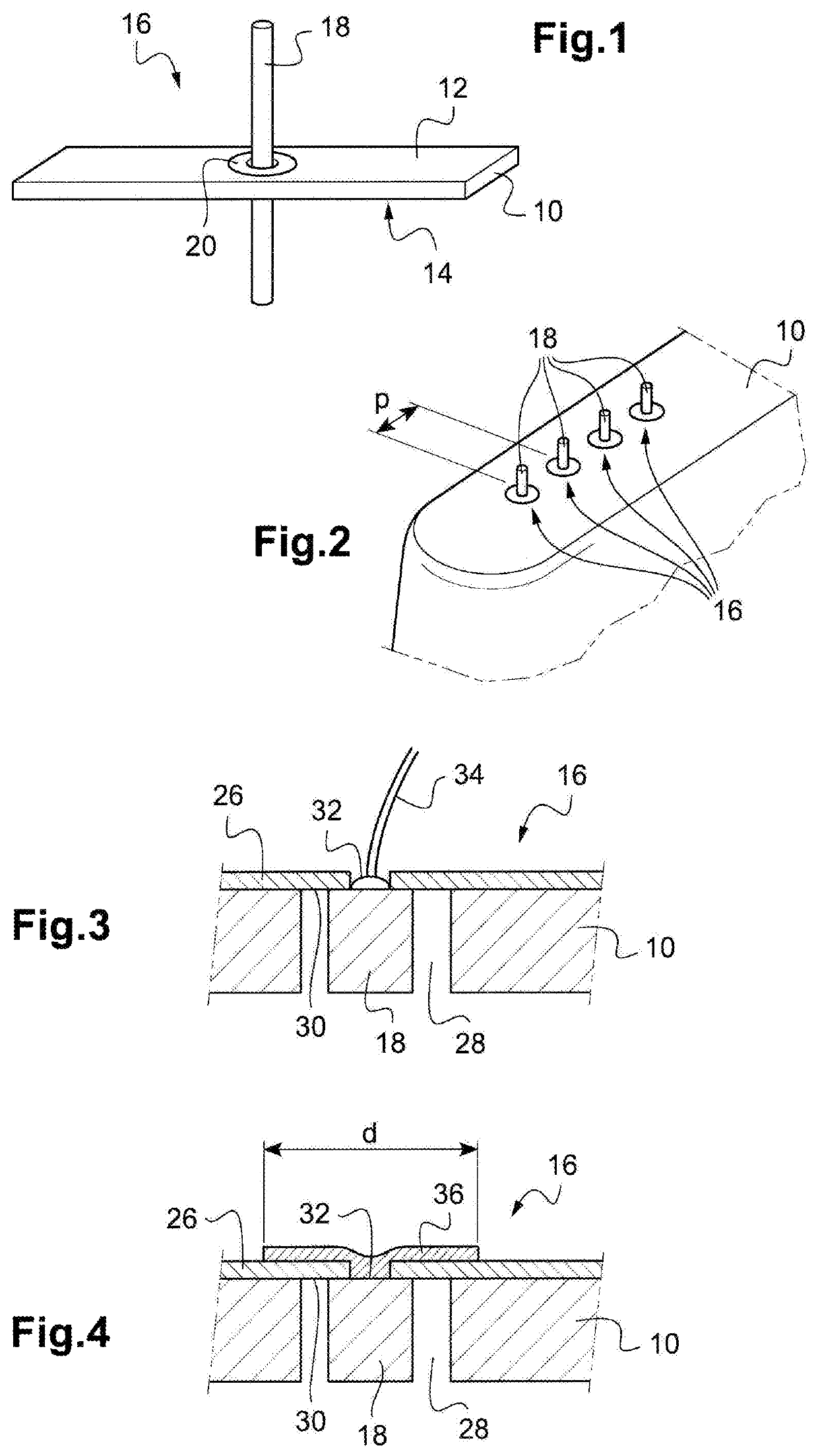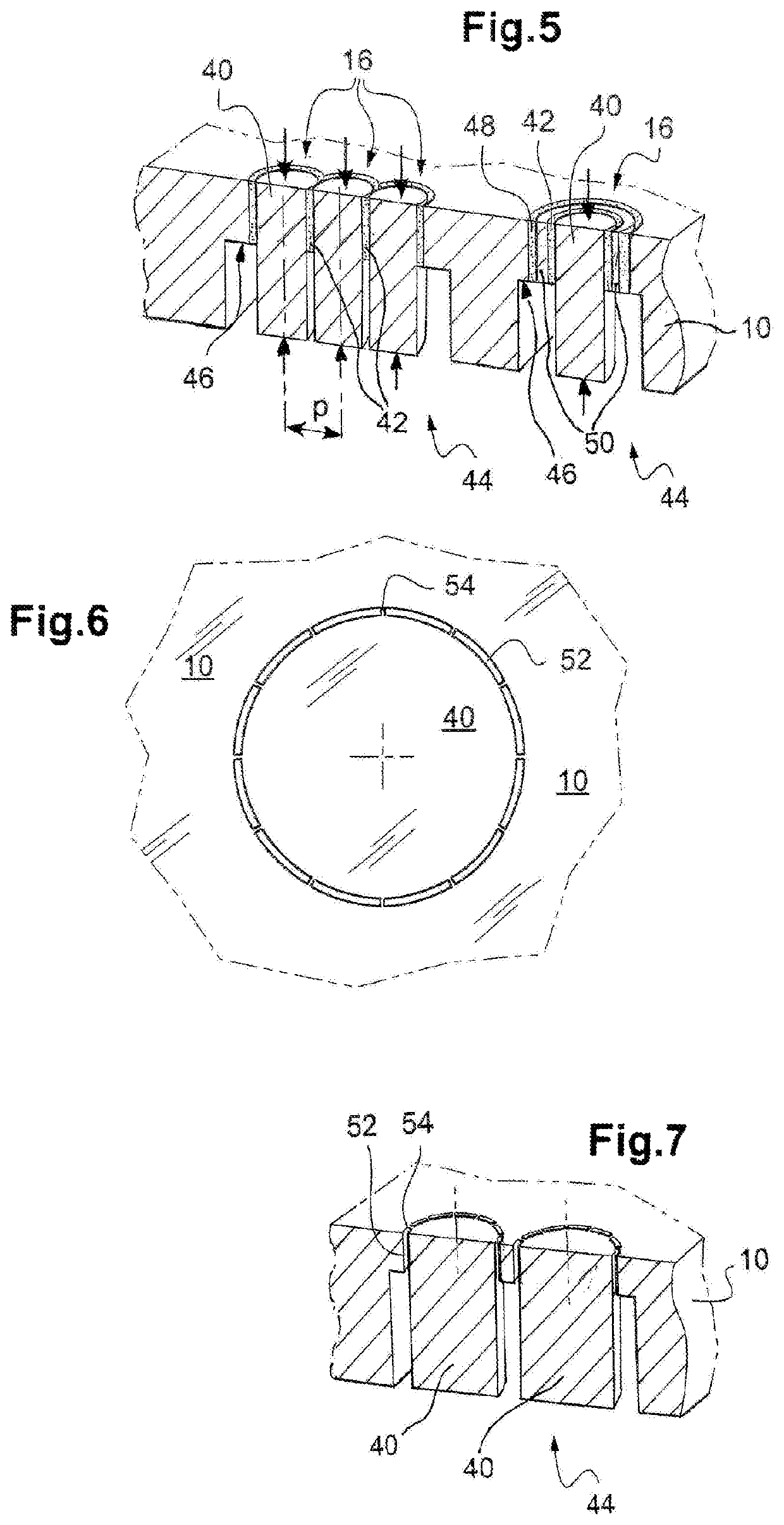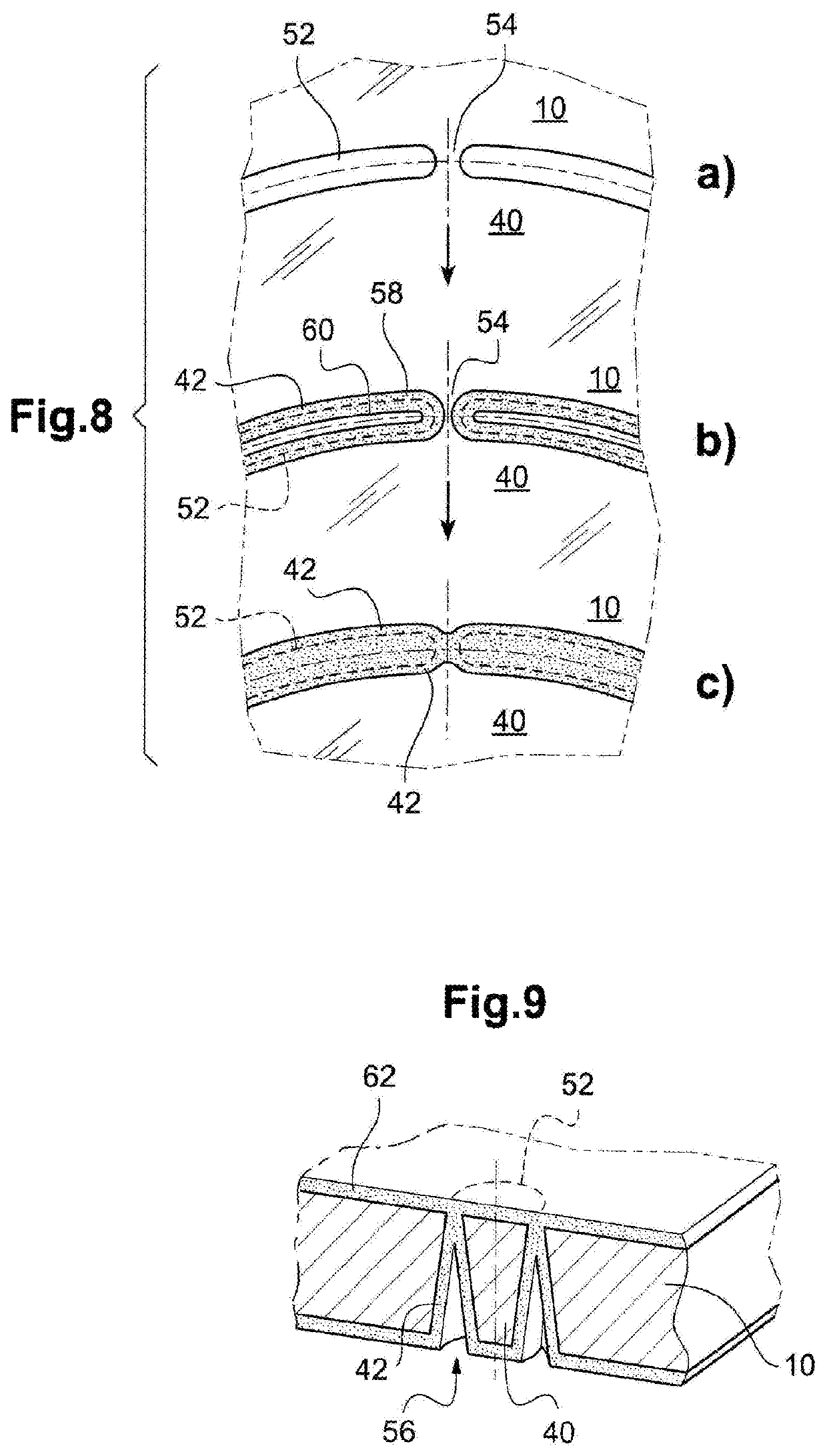Methods of manufacturing a hermetic and isolating feedthrough for an electronic device casing, in particular made of titanium
a technology of electronic devices and feedthroughs, which is applied in the direction of feed-through capacitors, capacitors, therapy, etc., can solve the problems of high cost, large number of successive implementations, and relatively complex implementations, and achieve the effect of robust mechanical holding
- Summary
- Abstract
- Description
- Claims
- Application Information
AI Technical Summary
Benefits of technology
Problems solved by technology
Method used
Image
Examples
Embodiment Construction
[0071]After a description of prior art, various examples of feedthroughs as well as two methods of making such feedthroughs using the teachings of the invention will be explained.
[0072]Feedthrough Structure with a Central Islet Held by a Bridge of Material
[0073]FIGS. 1 to 4 illustrate a prior art structure. In FIG. 1 is illustrated the principle of a feedthrough, which is intended to allow the passage of an electric connection through an electrically conductive wall including a metallic substrate 10, typically made of titanium.
[0074]The metallic substrate 10 includes an upper face 12 and a lower face 14 (these two terms referring only to the presentation of the figures, without limitative connotation; it will be the same for the adjectives “outer” and “inner” used to denote respectively these two same sides with respect to a casing, the substrate 10 forms a wall of which). The feedthrough 16 includes an electrically conductive metal through-element 18, fully isolated from the remain...
PUM
 Login to View More
Login to View More Abstract
Description
Claims
Application Information
 Login to View More
Login to View More - R&D
- Intellectual Property
- Life Sciences
- Materials
- Tech Scout
- Unparalleled Data Quality
- Higher Quality Content
- 60% Fewer Hallucinations
Browse by: Latest US Patents, China's latest patents, Technical Efficacy Thesaurus, Application Domain, Technology Topic, Popular Technical Reports.
© 2025 PatSnap. All rights reserved.Legal|Privacy policy|Modern Slavery Act Transparency Statement|Sitemap|About US| Contact US: help@patsnap.com



